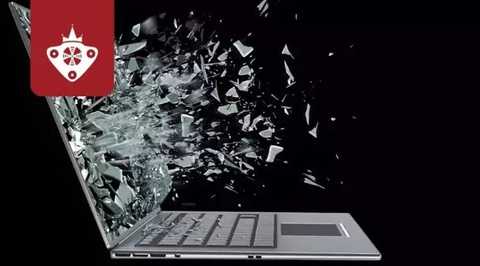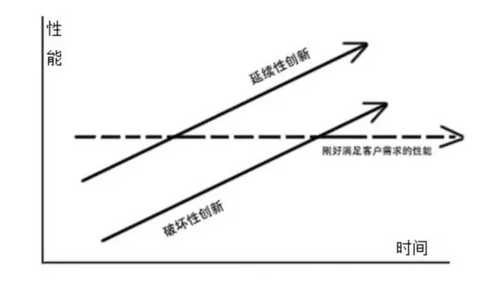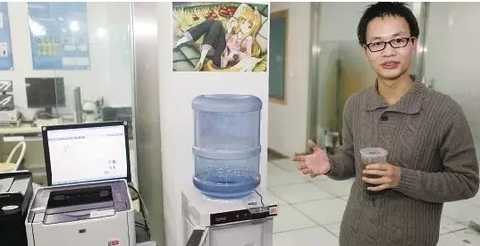[Introduction] The Internet of Things to support continuous innovation is difficult and difficult to attract users' interest. The Internet of Things is going to take the path of destructive innovation, so the mission of the Internet of Things is to create new "species."

Recently, the Ministry of Industry and Information Technology issued the "Notice on Comprehensively Advancing the Construction and Development of Mobile Internet of Things (NB-IoT)", and also divided the special frequency band for NB-IoT. The goal of building 400,000 base stations in 2017 and building 1.5 million base stations by 2020 is proposed.
With the support of low-power wide-area networks including NB-IoT in the past two years, the development of the Internet of Things has the conditions of truly industrialization and scale. The industry is expecting an explosion of the Internet of Things industry in the past few years.
However, looking back at the Internet of Things boom that began in 2009, the applications we are talking about now seem to be smart cities, smart homes, wearable devices, smart transportation... see the fragmentation market of the Internet of Things, except for government investment. difficult.
Have we really made no progress in these years?
From 2009 to the present, the progress of the entire information industry is huge. The mobile Internet has moved from popularity to popularity and even saturation. The evolution of mobile terminals is beyond imagination and even a bit tricky. All the app apps you can think of are basically developed. Cloud computing has also moved from the pioneer to the public. It is unthinkable to use a physical machine to support the business. Although artificial intelligence is very virtual, real machine learning can solve problems in many specific areas. The user's habits have changed a lot, using mobile phones more than using computers to watch TV more. Mobile payments are rapidly gaining popularity, and cash-free cities are viable. In this context, it is obviously out of place for the Internet of Things to go through the applications of 2009. Many of them are imagined, not real needs, and no feasible models.
Most of the IoT applications envisioned before are centered around people, and are applications that are extended and icing on the cake. These applications have solutions before, and most of the above ideas are intended to make them "good too much". However, Harvard Business School professor Christensen in The Innovator's Solution, has shown that users will gradually leave the "good too much" continuity of innovation, and instead choose a more cost-effective, or Products that are more convenient or more personally destructive and innovative.
So, what is the continuous innovation of “good overdose� When the previous "continuation innovation" (the slash on the left in the figure below) has exceeded the line of "performance that just meets customer needs" in the continuous iteration of iteration, it is called "good overdose". . The so-called too late, there will be destructive innovation in the back "the opportunity to debut (the diagonal line on the right in the figure below).

Figure: Destructive innovation model
Mini KTV, photo printer, shared charging treasure, what is the logic behind this wave of unmanned self-help projects?
The value that the Internet of Things creates for users at those points is already very small. Users may need a curtain to block it, but it doesn't need to be turned off automatically, let alone an additional remote control!
It is difficult for the Internet of Things to support continuous innovation, and it is difficult to attract users' interest. The Internet of Things is going to take the path of destructive innovation, so the mission of the Internet of Things is to create new "species."
In order to avoid overshoot, its first feature is to be free from attachment to people. Such a rich thing is not needed, because it is too much, the poor can't afford it. On the human body, within 10 meters of the person, the family is dependent on people, and the application of extension in this range is typical overshoot.
The second characteristic of new species is to be self-service. It is not a simple sensor that transmits a single piece of data. It has to provide a service itself, a system of its own. Sharing a bicycle is a good case.
Bicycles have been around for hundreds of years, and renting bicycles is not new. Why is the shared bicycle now a new species? First, it is out of the people. In the business process of renting, no one is involved, no one charges and watches the car. Second, it is self-service, paying, unlocking, and returning to the car. Of course, its maintenance, scheduling or rely on people, but people back to the background. At this time, the role of the Internet of Things is critical and decisive. Mobile Internet + Internet of Things has created a new species of shared bicycles. This new species has already met the needs of users 1-3 kilometers, so it is on fire.
At present, the environment created by these “species†is already in place, and it can be said that only the wind is coming. For example, the sharing mode (time-sharing lease) is actually the most used equipment, network, and data of the Internet of Things. A device for mass sales, an RFID for each item is of course too expensive, and there is no channel to recover the cost. But for shared-mode items, it's not enough to identify each item as much as possible and track and monitor the status of each item. The more complete, the finer the operation, the more models can be mined.
This is why Ma Huateng believes that OFO is not the mainstream of shared bicycles. Items in shared mode, without the Internet of Things, there is no operation at all.
Other examples are self-service devices such as vending machines, coffee machines, orange juice machines, and miniKTV. The former Internet of Things Network Red @Zheda CCNT laboratory water dispenser will use Weibo to send its own status. But it didn't really go to the public, right? It is not a new species, just a better water dispenser.

Picture: Zhejiang University CCNT Laboratory Water Dispenser
The current coffee machine is different. It is a producer or a salesperson. Of course, it will also send "microblogging" but it is not sent to people to sell, but to the operators to provide key information for adding water and adding coffee beans. The value of the message it sends is much larger than that of selling it on Weibo. At this time, it is only natural to pay for the sensor and pay for the data.
Further new species will be more, and foreseeable include driverless cars, courier cars, and various robots. Some of them will walk into our lives, some in the factory or in the transportation sector. Only between them is the real Internet of Things. The digitalization of supply chain that people have envisioned before can be realized in all aspects.
Some people are too cumbersome to make a better solution, not destructive. To be more awkward, we have entered the era when people do things too well, and new species can meet the basic needs of people.
The mission of the Internet of Things is to serve this era and create more new species.
Editor in charge: null
Drinkware,Beer Glassware,Outdoor Wine Glasses,Christmas Glassware
Shaanxi Freeway Export and Import Co.,LTD. , https://www.fw-deco.com